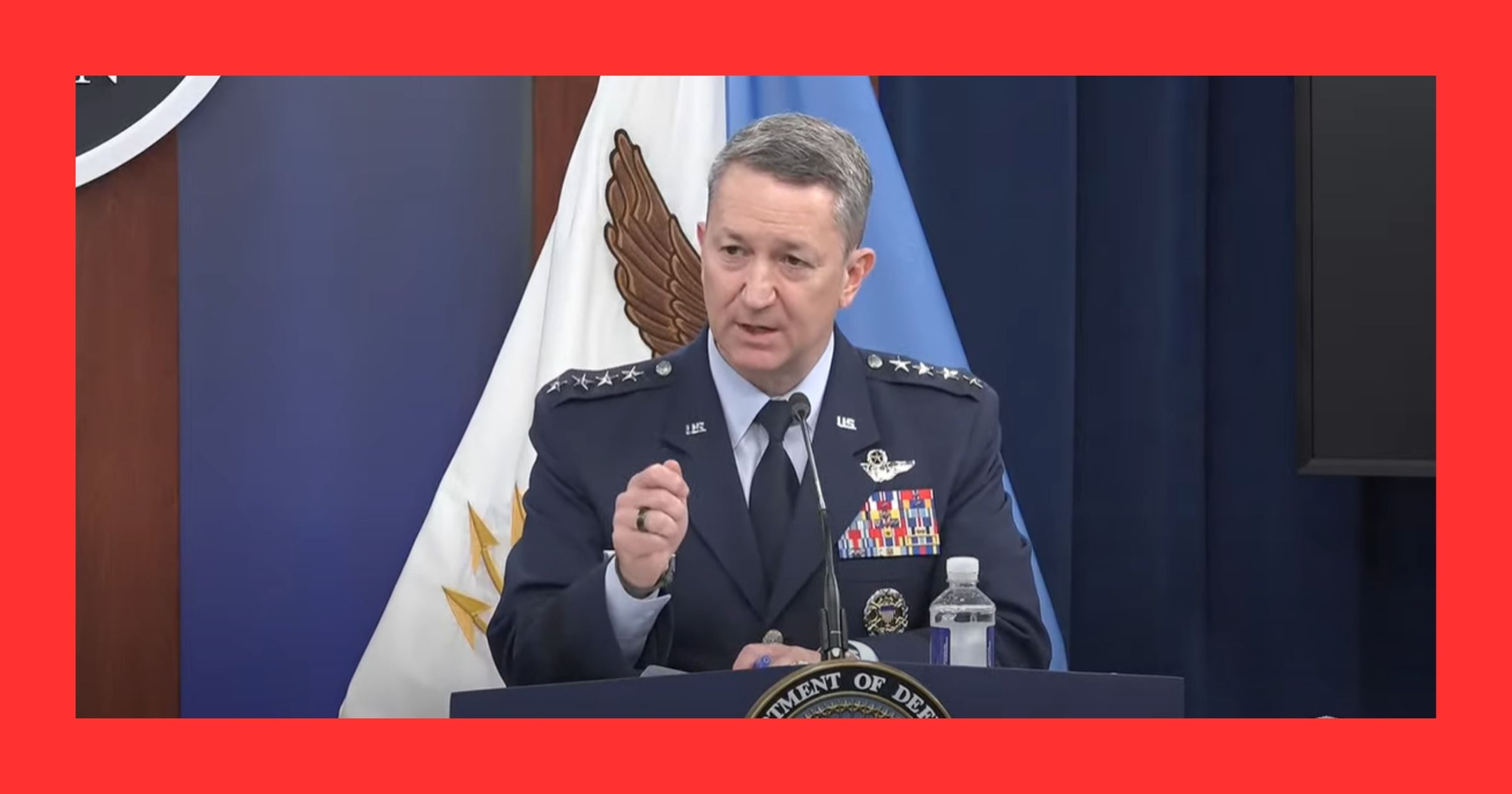
In the early hours of Saturday morning, under direct orders from President Trump, the United States executed one of the most complex and far-reaching military strikes in recent history. Operation Midnight Hammer targeted three Iranian nuclear facilities in a coordinated, multi-domain assault that U.S. military officials say has dealt a severe blow to Iran’s nuclear weapons infrastructure.
Operation MIDNIGHT HAMMER was a success. pic.twitter.com/3SNkHRMWMI
— DOD Rapid Response (@DODResponse) June 22, 2025
According to U.S. Air Force Lieutenant General Dan “Razin” Caine, who provided the official briefing Sunday morning, the strike was carried out under the authority of U.S. Central Command and involved over 125 aircraft, including seven B-2 Spirit stealth bombers and dozens of refueling and support aircraft. The operation also marked the first combat use of the GBU-57 Massive Ordnance Penetrator, a 30,000-pound bunker-busting bomb designed to destroy hardened underground targets.
The mission began at midnight Eastern Time on Friday, as seven B-2 bombers launched from the continental United States. To preserve the element of surprise, part of the strike group diverted west into the Pacific as a decoy, while the primary strike package flew east toward Iranian targets. Throughout the 18-hour flight, the bombers completed multiple in-flight refuelings and maintained near-radio silence to avoid detection. Upon reaching the Middle East, the B-2s synchronized with escort and support aircraft in a carefully choreographed maneuver that General Caine described as requiring “exact synchronization across multiple platforms in a narrow piece of airspace.”
At approximately 5:00 p.m. Eastern Time on Saturday, a U.S. guided missile submarine operating in the CENTCOM area of responsibility launched over two dozen Tomahawk Land Attack Missiles targeting surface infrastructure at Esfahan. This preceded the main air assault and was intended to disorient Iranian defense systems ahead of the aerial penetration.
Shortly afterward, fourth- and fifth-generation U.S. fighter aircraft surged ahead of the bomber formation, acting as decoys and performing sweeps for surface-to-air missile threats and enemy aircraft. These fighters also fired suppressive ordnance at likely SAM launch positions to clear the way for the strike package’s entry into Iranian airspace.
The lead B-2 bomber reached the first target over Fordow at 6:40 p.m. Eastern Time (2:10 a.m. local Iran time) and released two GBU-57 bombs onto fortified underground nuclear facilities. Within the next 25 minutes, the remaining bombers struck additional targets at Natanz and Esfahan, dropping a total of 14 MOPs across the three sites. The final wave of Tomahawk cruise missiles struck Esfahan just after the bombers’ exit to maximize confusion and preserve the element of surprise.
Remarkably, General Caine stated that U.S. forces encountered no resistance on the way in or out. “Iran’s fighters did not fly,” he said. “It appears that Iran’s surface-to-air missile systems did not see us.” U.S. officials currently assess that no shots were fired at any component of the strike package during the operation.
Altogether, approximately 75 precision-guided munitions were used, including the 14 GBU-57 bombs and over two dozen cruise missiles. The B-2 strike itself was the largest operational deployment of the aircraft in U.S. history and the second-longest mission ever flown by B-2 crews, surpassed only by operations in the immediate aftermath of 9/11. Supporting commands included U.S. Strategic Command, Transportation Command, Cyber Command, Space Command, European Command, and Space Force—demonstrating a global coordination network built for maximum reach and discretion.
Battle damage assessments are ongoing, but preliminary analysis suggests all three targeted sites sustained “extremely severe damage and destruction,” according to General Caine. The Fordow facility in particular, built deep underground and heavily fortified, was believed to be critical to Iran’s near-term nuclear weapons capability. The GBU-57s used in the strike were developed specifically to penetrate reinforced bunkers like these.
The scale and secrecy of Operation Midnight Hammer surprised even many inside Washington. According to General Caine, only a limited number of planners and decision-makers were read in on the details and timing of the operation. Operational security was reportedly a top concern for the president, Secretary of Defense, and senior commanders. The mission remained undisclosed until after all ordnance had been delivered and assets were safely on the return flight.
In the hours following the strike, force protection levels were raised across U.S. positions in Iraq, Syria, and the Gulf. The Pentagon confirmed that troops in those regions remain on high alert for potential retaliation from Iran or its regional proxies. General Caine closed his remarks with a warning: “Any Iranian retaliation would be an incredibly poor choice. We will defend ourselves.”
With the operation now public, attention will shift to diplomatic fallout and Iran’s potential response. But inside the Pentagon, officials are already calling Operation Midnight Hammer a landmark in military coordination, stealth warfare, and strategic deterrence. “No other military in the world could have done this,” General Caine said. “And no other force has the precision, discipline, and reach that our Joint Force demonstrated last night.”




